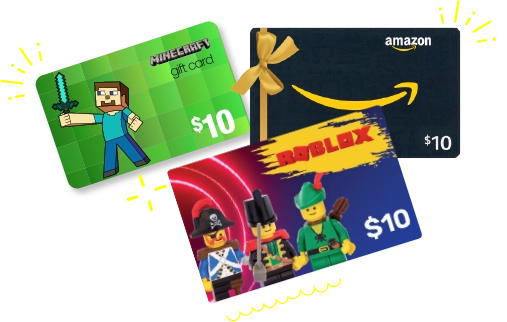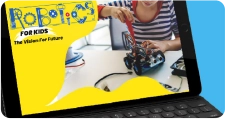
Project-based Learning is the Way Forward
As parents and educators, you might have encountered the buzz surrounding “project-based learning”. But what is it exactly? Why should you care about project-based learning when it comes to your child’s education? Why are schools jumping on this hype train and trying to implement it in their curricula? We’ll try to address these questions and talk more about the importance and benefits of project-based learning in this article.
What is Project-Based Learning?
Project-based learning or PBL is a practice that approaches learning in a step-by-step manner where students become active participants in their own educational growth. Classrooms that implement PBL have students participating in simulations, conducting case studies, solving novel problems, and even designing research projects. It is basically an instructional methodology that wholeheartedly encourages students to learn new things and apply their knowledge and skills through engaging experiences. One of the best things about PBL is that it not only allows for deeper learning but it also imparts students with skills that are usually tied to their college and career readiness.
PBL encourages students to discover real-world problems and develop practical solutions to these problems aimed at inspiring change at the local and global levels. A strong PBL curriculum usually requires a multidisciplinary approach. This is where educators collaborate to support sustained inquiry and differentiated skill-building.
The Benefits of PBL
PBL helps children develop skill sets to thrive in a future dominated by technologies like AI and automation. It’s not just STEAM or STEM learning that is required to ensure that your kids develop the necessary skills needed to secure fulfilling jobs in the future. We already know that the world is rapidly moving towards a future that will reward professionals that not only have STEAM skills but also possess skills like creativity, problem-solving, and collaboration.
The traditional educational model that structures itself around passively learning facts and blurting them out for quizzes and examinations is no longer sufficient to prepare students in the 21st century. The future needs problem solvers and to solve highly complex problems, kids need a combination of both fundamental skills like reading, writing, and math and 21st-century skills like STEAM, teamwork, problem-solving, time-management, research gathering, utilizing technology and more. With such a combination of skills, kids become the managers and directors of their own learning path, receiving guidance and mentorship from skilled educators along the way.
PBL helps in building such skills and more. It also helps in developing skills like the following –
- Planning, critical thinking, creativity, and reasoning
- Social and personal responsibility
- Cross-cultural understanding
- Interpersonal communication skills
- Visualization and decision making
- Knowing when and how to use technological tools
- Conducting fruitful and systematic research
Characteristics of PBL
Here are the main characteristics of PBL that help with deeper and experiential learning.
Interdisciplinary Approach
PBL’s main focus is to engage students with real-world problems. Real-world challenges are rarely solved by using information or skills from one specific subject area and this is why PBL offers a holistic interdisciplinary approach. Projects require students to engage in research, inquiry, solution-development, and product construction to help address real-world problems and challenges presented to them. Naturally, when students engage in such projects, they utilize knowledge and skills from a wide variety of academic domains.
Student-centered
In traditional learning, the teacher usually takes on the role of a content-deliverer but in PBL, a teacher becomes a facilitator and/or project manager. Students get to work more independently throughout the process of working on their projects. Teachers usually step in only when it’s required. The best part about engaging in PBL is that it encourages students to make their own decisions on how best to work on their projects and demonstrate their understanding. This methodology fosters student independence, the development of 21st-century skills (as discussed above), and ownership of their work.
Thorough Learning
Unlike traditional learning that requires good recall and recognition, PBL requires the practical application of knowledge and skills. PBL is the complete opposite of rote learning in this regard. PBL is more complex and can easily be used to assess how students apply a wide variety of academic content in different contexts. Project-based learning usually begins with inquiry. The stage that involves inquiry directly leads to deeper learning because it involves the use of content in real-world applications. Inquiry can also help students develop practical solutions that address the problems and challenges of the particular project. Ultimately, students are able to create products that communicate solutions to audiences based upon the application of content and skills.
The process of PBL
PBL usually involves a holistic 9-step process explained below.
- A teacher/mentor/coach initiates the process by providing students with real-life examples of projects.
- Students then take on the role of project designers. They also establish a forum for discussion, display, or competition.
- Students accumulate background information and discuss requirements for their designs.
- The teacher/mentor/coach and students negotiate the criteria for project evaluations.
- Students then start accumulating the materials required for their projects.
- Students create their projects.
- Students start preparing to present their projects.
- Students present their projects to peers.
- Finally, students reflect on the entire process and evaluate their projects based on the evaluation criteria established earlier.
Why is PBL important?
A strong body of research on PBL says that it directly increases student achievement and engagement. Moreover, it helps students with college and career readiness as mentioned earlier. Here are the two main reasons why PBL is the need of the hour viz a viz school curricula and educational structures.
- Project-based learning is a pedagogical multidisciplinary approach that provides students with meaningful and impactful learning opportunities. Although project-based learning can be content-specific, it can also serve as a tool for integrating multiple subjects. PBL encourages students to make connections across a wide variety of content domains rather than thinking about each subject in isolation.
- PBL is the path to real-world learning. Project-based learning provides students a great opportunity to engage in authentic projects that are tied to real-world experiences and careers. Such projects also help students gain a deeper understanding of the concepts learned through authentic and relevant learning experiences.
Moonpreneur – Pioneering PBL
While schools across the United States are still trying to implement PBL successfully into their curricula, Moonpreneur’s Innovator program places PBL as one of its foundations. Our Innovator program does not only focus on STEAM learning but also self-discovery and exploration. Our program has been developed by experts from the ground-up to help kids discover their interests and inclinations. Moreover, the entirety of our program takes children through a complete product/project-based end-to-end learning approach where kids get the opportunity to materialize their visions into tangible products and businesses. In fact, PBL being the core of our program, we are able to guide children to identify real-world problems and come up with innovative solutions for the same through unique products, services, and businesses. Children graduating from our program have already launched successful STEAM-based products on the market. Basing our program on PBL, we also ensure kids get to develop crucial skills like critical thinking, creativity, problem-solving, teamwork, and collaboration.











